NPs Basic Information
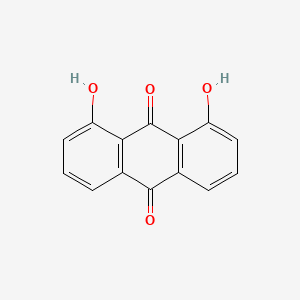
|
Name |
Danthron
|
| Molecular Formula | C14H8O4 | |
| IUPAC Name* |
1,8-dihydroxyanthracene-9,10-dione
|
|
| SMILES |
C1=CC2=C(C(=C1)O)C(=O)C3=C(C2=O)C=CC=C3O
|
|
| InChI |
InChI=1S/C14H8O4/c15-9-5-1-3-7-11(9)14(18)12-8(13(7)17)4-2-6-10(12)16/h1-6,15-16H
|
|
| InChIKey |
QBPFLULOKWLNNW-UHFFFAOYSA-N
|
|
| Synonyms |
danthron; 1,8-Dihydroxyanthraquinone; 117-10-2; Chrysazin; Dantron; Antrapurol; Dorbane; Istizin; Altan; Laxanthreen; Diaquone; Laxanorm; 1,8-Dihydroxyanthracene-9,10-dione; Laxipurin; Zwitsalax; Danivac; Dionone; Duolax; Laxipur; danthrone; Prugol; Roydan; 1,8-Dihydroxy-9,10-anthraquinone; 9,10-Anthracenedione, 1,8-dihydroxy-; 1,8-Dihydroxyanthrachinon; Usaf nd-59; Dioxyanthrachinonum; 1,8-Dihydroxyanthra-9,10-quinone; Chrysazine; Dantrone; Dorbanex; 1,8-Dihydroxy-9,10-anthracenedione; Criasazin; Dantrona; Dantronum; LTAN; Anthraquinone, 1,8-dihydroxy-; 1,8-Dihydroanthraquinone; 1,8-dihydroxy-anthraquinone; NSC 38626; Dantron [INN]; NSC 646568; Pilules Vinchy N.F.; NSC7210; MFCD00001211; NSC-38626; Z4XE6IBF3V; NSC-646568; 1,8-dihydroxy-9,10-dihydroanthracene-9,10-dione; CHEMBL53418; CHEBI:3682; Pastomin; Bancon; Istan; component of Doxan; Neokutin S; component of Modane; Scatron D; Dantron (INN); component of Doxidan; NSC646568; component of Dorbantyl; NCGC00091367-01; NCGC00091367-05; 9, 1,8-dihydroxy-; DSSTox_CID_328; Anthraquinone,8-dihydroxy-; Dantrone [INN-French]; Dantronum [INN-Latin]; Dantrona [INN-Spanish]; DSSTox_RID_75516; DSSTox_GSID_20328; 1,4,5,8-Tetroxyantraquinone; WLN: L C666 BV IVJ DQ NQ; 1,8-Dihydroxyanthrachinon [Czech]; Danthron [USP]; CAS-117-10-2; CCRIS 3529; EINECS 204-173-5; UNII-Z4XE6IBF3V; Istizine; Laxapur; AI3-38117; HSDB 7764; 3nsq; Danthron, BAN; Dantron, INN; Dorbanex (Salt/Mix); Dorbantyl (Salt/Mix); Spectrum_001750; dihyanthraquin_P41_LT; DANTHRON [HSDB]; DANTRON [IARC]; DANTHRON [MI]; DANTHRON [VANDF]; DANTRON [MART.]; Spectrum2_000603; Spectrum3_000650; Spectrum4_001682; Spectrum5_000324; dihyanthraquin_P21/n_LT; DANTRON [WHO-DD]; NCIMech_000114; dihyanthraquin_P41212_RT; 1,8 Dihydroxy Anthraquinone; SCHEMBL83688; BSPBio_002259; KBioGR_001944; KBioSS_002230; SPECTRUM211468; MLS000069608; Pilules Vinchy N.F. (TN); DivK1c_000284; SPBio_000506; MEGxp0_001693; DTXSID9020328; ACon1_000135; BDBM11316; HMS500O06; KBio1_000284; KBio2_002230; KBio2_004798; KBio2_007366; KBio3_001479; 1,8-Dihydroxyanthraquinone ,(S); 1,8-Dihydroxyanthraquinone-[d6]; NINDS_000284; 1,8-Dihydroxyanthraquinone, 96%; HMS2091A09; HMS3715F08; Pharmakon1600-00211468; 8,9-dihydroxy-1,10-anthraquinone; BCP31079; HY-B0923; NSC-7210; NSC38626; ZINC3860369; Tox21_111122; Tox21_200986; BBL013161; CCG-35470; NSC755828; s4561; STK238373; AKOS001583216; Tox21_111122_1; 1,8-Dihydroxyanthra-9,10-quinone #; AM10629; CS-4392; DB04816; HS-1003; NSC-755828; IDI1_000284; NCGC00091367-02; NCGC00091367-03; NCGC00091367-04; NCGC00091367-06; NCGC00091367-07; NCGC00258539-01; 1,8-bis(oxidanyl)anthracene-9,10-dione; NCI60_041443; SMR000059018; SY011288; DITHRANOL IMPURITY B [EP IMPURITY]; SBI-0051330.P003; 1,8-Dihydroxy-9,10-anthracenedione, 9CI; D0563; EU-0099935; FT-0624445; D07107; F17670; 1,8-Dihydroxyanthracene-9,10-dione (Danthron); AB00051961_09; Danthron (1,8-Dihydroxyanthracene-9,10-dione); EN300-1693514; A803710; SR-01000721864; Q5221244; SR-01000721864-2; W-108572; BRD-K10065684-001-02-5; BRD-K10065684-001-03-3; BRD-K10065684-001-06-6; 1,8-Dihydroxyanthraquinone, Vetec(TM) reagent grade, 96%; Dantron; Chrysazin;1,8-Dihydroxyanthraquinone;1,4,5,8-tetroxyantraquinone
|
|
| CAS | 117-10-2 | |
| PubChem CID | 2950 | |
| ChEMBL ID | CHEMBL53418 |
*Note: the IUPAC Name was collected from PubChem.
Chemical Classification: |
|
|
|---|
——————————————————————————————————————————
NPs Species Source
| Endophyte ID | Endophyte Name | Family | Genus | Taxonomy ID | GenBank ID | Closest GenBank ID | Reference | |
|---|---|---|---|---|---|---|---|---|
| Endophyte ID | Endophyte Name | Family | Genus | Taxonomy ID | GenBank ID | Closest GenBank ID | Reference |
NPs Biological Activity
| Bioactivity Name | Target ID | Target Name | Target Type | Target Organism | Target Organism ID | Potency of Bioactivity | Activity Type | Value | Unit | Endophyte ID | Endophyte Name | |
|---|---|---|---|---|---|---|---|---|---|---|---|---|
| Bioactivity Name | Target ID | Target Name | Target Type | Target Organism | Target Organism ID | Potency of Bioactivity | Activity Type | Value | Unit | Endophyte ID | Endophyte Name |
NPs Physi-Chem Properties
| Molecular Weight: | 240.21 | ALogp: | 3.2 |
| HBD: | 2 | HBA: | 4 |
| Rotatable Bonds: | 0 | Lipinski's rule of five: | Accepted |
| Polar Surface Area: | 74.6 | Aromatic Rings: | 3 |
| Heavy Atoms: | 18 | QED Weighted: | 0.633 |
——————————————————————————————————————————
NPs ADMET Properties*
ADMET: Absorption
| Caco-2 Permeability: | -4.917 | MDCK Permeability: | 0.00001410 |
| Pgp-inhibitor: | 0.066 | Pgp-substrate: | 0 |
| Human Intestinal Absorption (HIA): | 0.009 | 20% Bioavailability (F20%): | 0.097 |
| 30% Bioavailability (F30%): | 0.998 |
——————————————————————————————————————————
ADMET: Distribution
| Blood-Brain-Barrier Penetration (BBB): | 0.226 | Plasma Protein Binding (PPB): | 99.38% |
| Volume Distribution (VD): | 0.506 | Fu: | 1.05% |
——————————————————————————————————————————
ADMET: Metabolism
| CYP1A2-inhibitor: | 0.962 | CYP1A2-substrate: | 0.118 |
| CYP2C19-inhibitor: | 0.247 | CYP2C19-substrate: | 0.056 |
| CYP2C9-inhibitor: | 0.633 | CYP2C9-substrate: | 0.592 |
| CYP2D6-inhibitor: | 0.584 | CYP2D6-substrate: | 0.247 |
| CYP3A4-inhibitor: | 0.663 | CYP3A4-substrate: | 0.138 |
——————————————————————————————————————————
ADMET: Excretion
| Clearance (CL): | 6.638 | Half-life (T1/2): | 0.141 |
——————————————————————————————————————————
ADMET: Toxicity
| hERG Blockers: | 0.015 | Human Hepatotoxicity (H-HT): | 0.045 |
| Drug-inuced Liver Injury (DILI): | 0.95 | AMES Toxicity: | 0.883 |
| Rat Oral Acute Toxicity: | 0.25 | Maximum Recommended Daily Dose: | 0.08 |
| Skin Sensitization: | 0.585 | Carcinogencity: | 0.933 |
| Eye Corrosion: | 0.008 | Eye Irritation: | 0.989 |
| Respiratory Toxicity: | 0.05 |
——————————————————————————————————————————
*Note: the ADMET properties was calculated by ADMETlab 2.0. Reference: PMID: 33893803.
Similar Compounds*
Compounds similar to EMNPD with top10 similarity:
| Similar NPs | Similar Drugs | ||||||
|---|---|---|---|---|---|---|---|
| NPs ID | NPs 2D Structure | Similarity Score | TTD ID | Drug 2D Structure | Similarity Score | ||
| ENC004888 |  |
1.000 | D03GET | 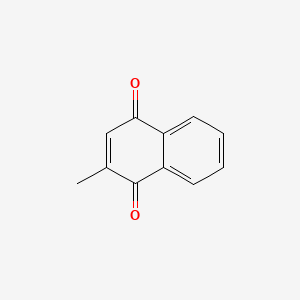 |
0.365 | ||
| ENC000337 | 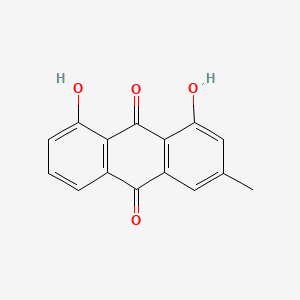 |
0.672 | D0N1FS | 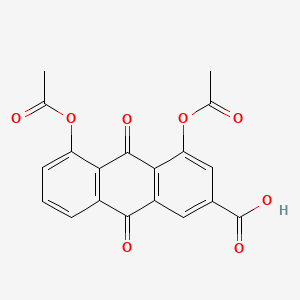 |
0.352 | ||
| ENC002125 | 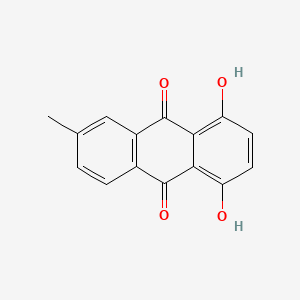 |
0.522 | D06ZEE | 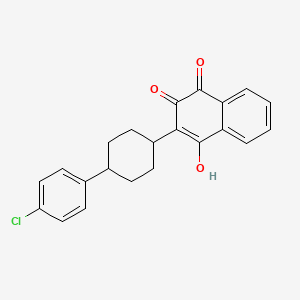 |
0.348 | ||
| ENC004820 | 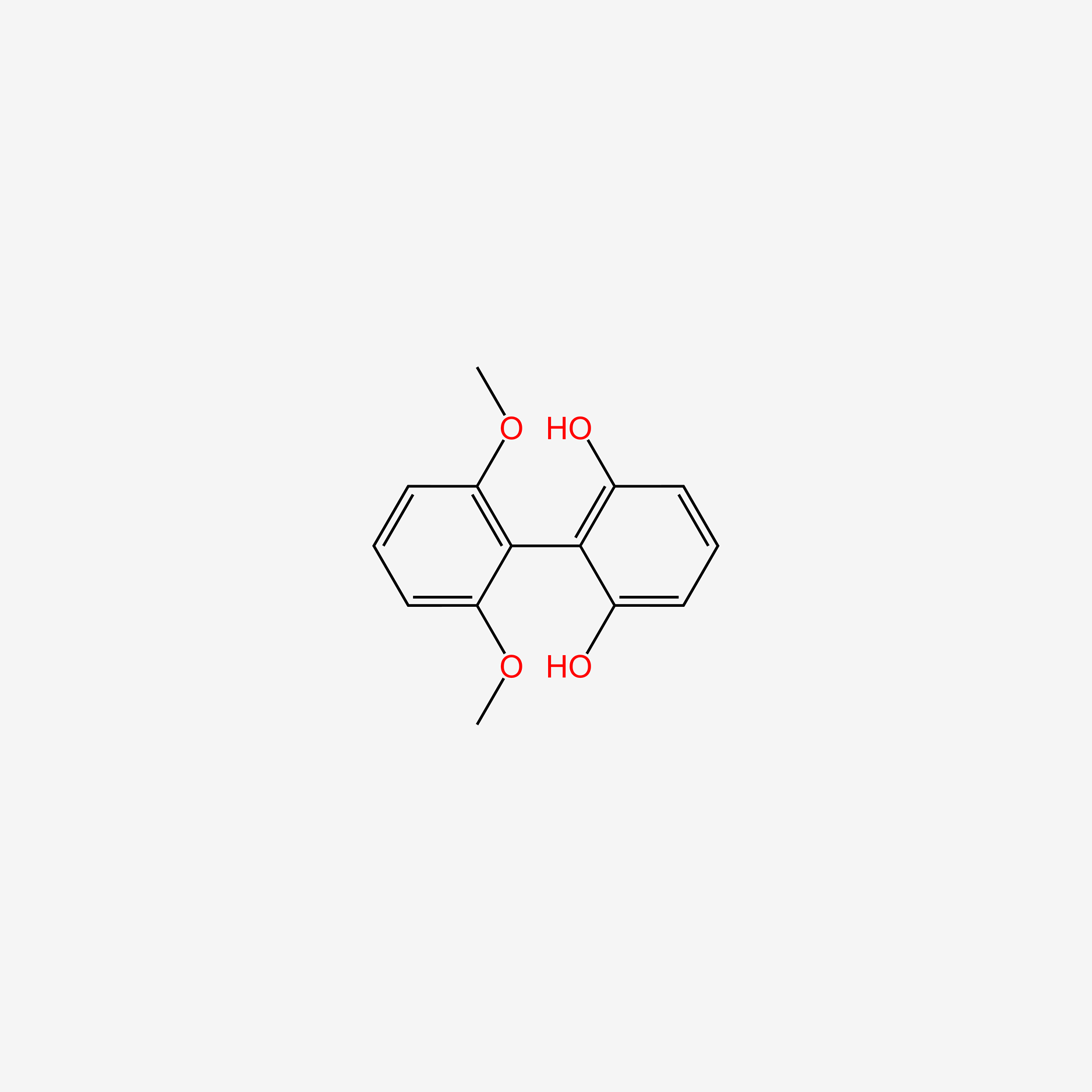 |
0.471 | D0Q5UQ | 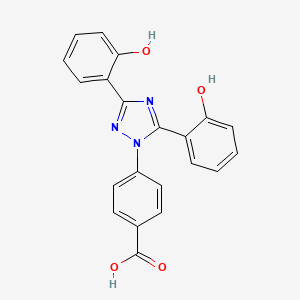 |
0.340 | ||
| ENC000683 | 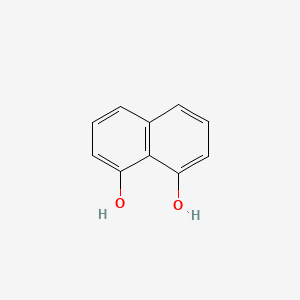 |
0.448 | D08FTG |  |
0.338 | ||
| ENC005572 | 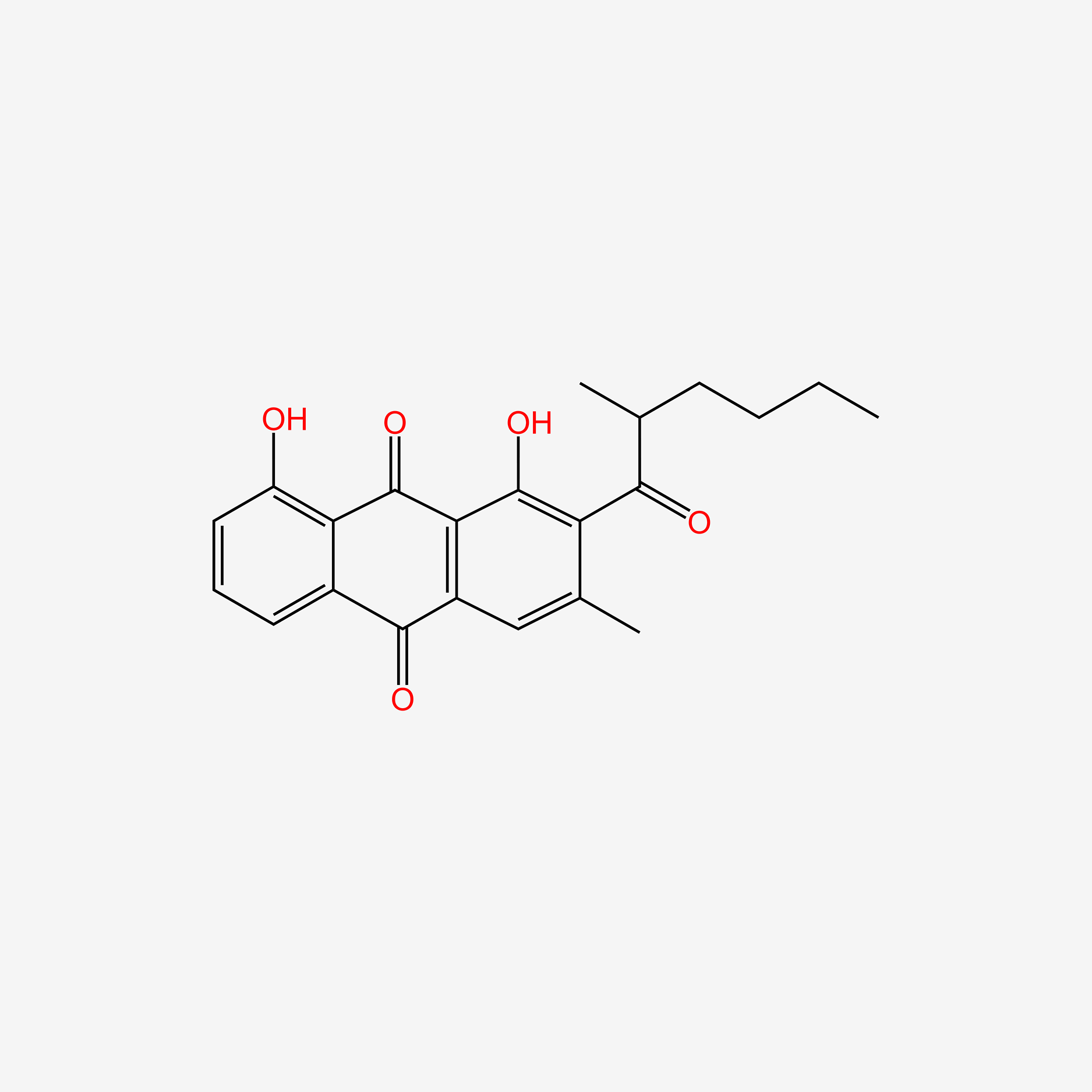 |
0.447 | D09WKB | 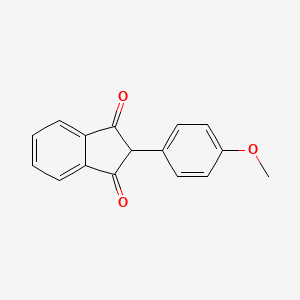 |
0.333 | ||
| ENC005573 | 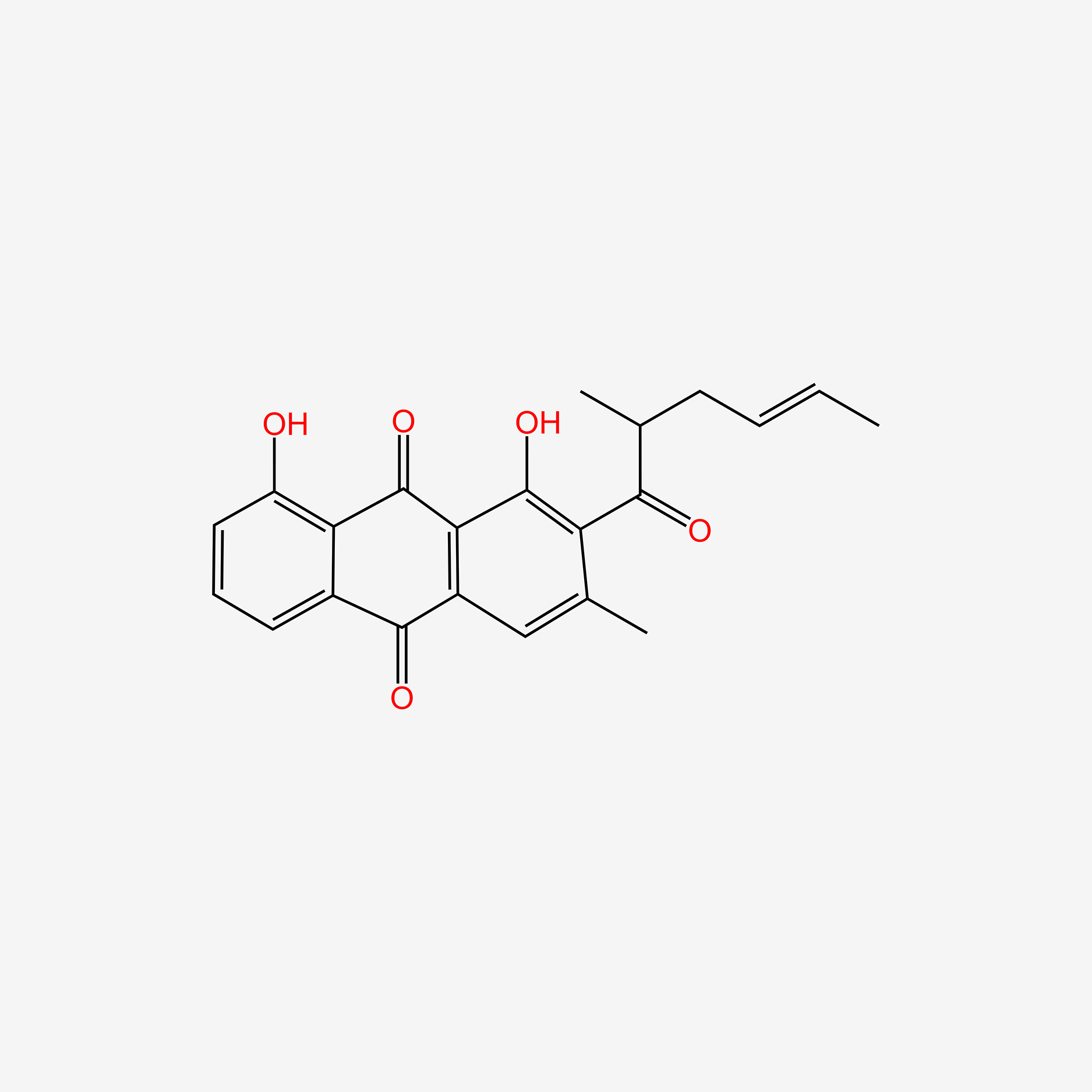 |
0.447 | D0H6QU | 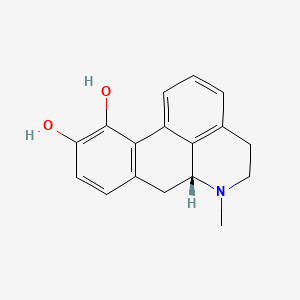 |
0.321 | ||
| ENC000094 | 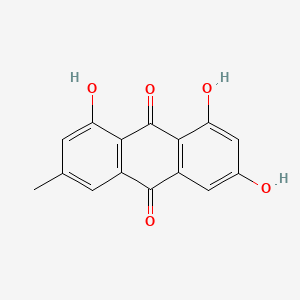 |
0.444 | D0R3JB | 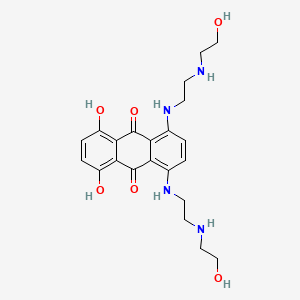 |
0.308 | ||
| ENC001111 |  |
0.438 | D02TJS | 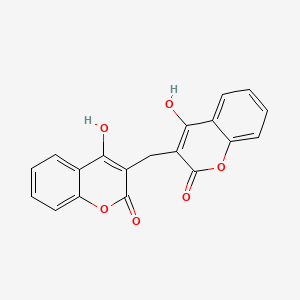 |
0.301 | ||
| ENC004045 |  |
0.437 | D06TJJ | 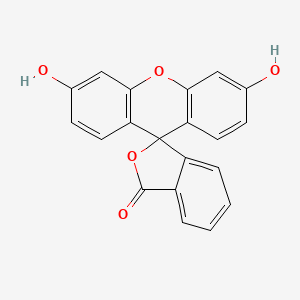 |
0.298 | ||